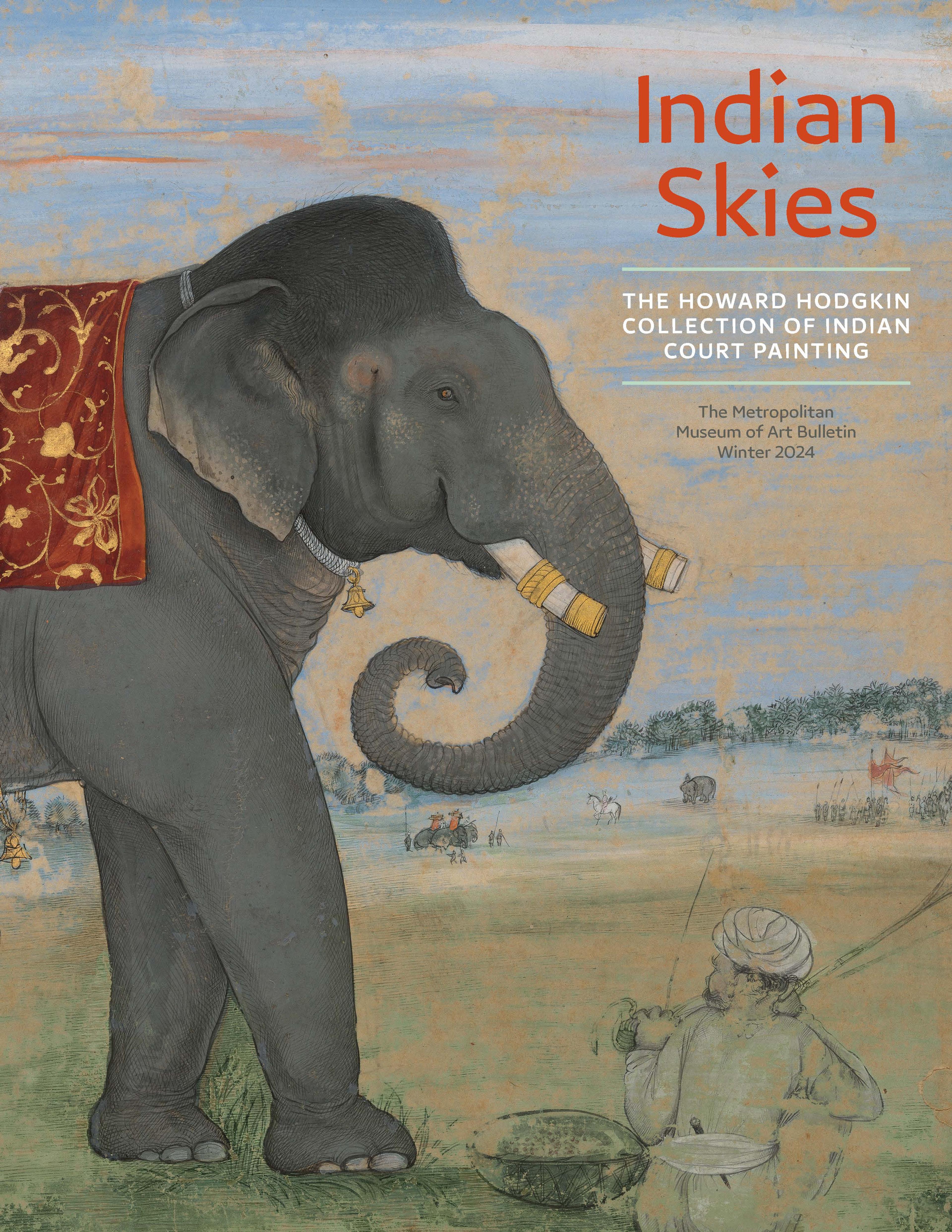Sultan Ibrahim 'Adil Shah II in Procession
This diminutive painting depicts Sultan Ibrahim ‘Adil Shah of Bijapur on the back of an elephant surrounded by attendants. The Sultan appears in royal finery amid a procession of attendants who surround the ruler with royal emblems including parasols, banners and scarves. This detailed work in miniature is attributed to the school of 'Ali Riza, who was a master of shading and stippling, techniques found here in the lively elephants.
Artwork Details
- Title: Sultan Ibrahim 'Adil Shah II in Procession
- Artist: School of 'Ali Riza 'Abbasi (Indian, active ca. 1600–1650)
- Date: mid-17th century
- Geography: Attributed to India, Deccan, Bijapur. Country of Origin India
- Medium: Opaque watercolor and gold on paper
- Dimensions: Frame: 27 3/8 × 20 1/16 × 1 3/16 in. (69.5 × 51 × 3 cm)
Image: 5 5/16 × 4 1/8 in. (13.5 × 10.5 cm) - Classification: Codices
- Credit Line: Howard Hodgkin Collection, Purchase, Florence and Herbert Irving Acquisitions, Harris Brisbane Dick, and 2020 Benefit Funds; Howard S. and Nancy Marks, Lila Acheson Wallace, and Friends of Islamic Art Gifts; Louis V. Bell, Harris Brisbane Dick, Fletcher, and Rogers Funds and Joseph Pulitzer Bequest; and funds from various donors, 2022
- Object Number: 2022.207
- Curatorial Department: Islamic Art
More Artwork
Research Resources
The Met provides unparalleled resources for research and welcomes an international community of students and scholars. The Met's Open Access API is where creators and researchers can connect to the The Met collection. Open Access data and public domain images are available for unrestricted commercial and noncommercial use without permission or fee.
To request images under copyright and other restrictions, please use this Image Request form.
Feedback
We continue to research and examine historical and cultural context for objects in The Met collection. If you have comments or questions about this object record, please contact us using the form below. The Museum looks forward to receiving your comments.
